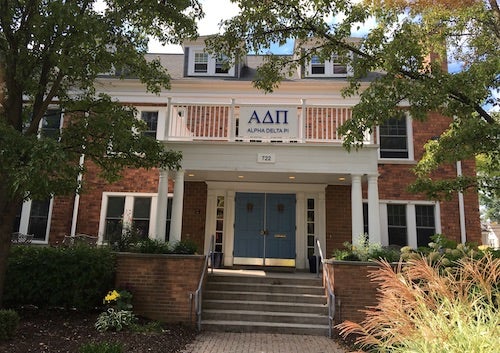220 Main Street
- Pilaster capital.
- East side 1.
- East side 2.
- East side 3.
Its not often that you see Corinthian pilasters on a store front, however on Main Street different architectural styles are quite prolific. It seems that no two facades on the street are the same. However, the Italianate commercial style is the dominant type of architecture with its elaborate cornices and double bracketing (under the eaves) that easily stand out from above. In this case, the store that shares the Phoenix Center and Main Street T-Shirts is flanked by two narrow Corinthian pilasters. The one on the right side has eroded away, but on the left the acanthus leaves and flower decoration (the uppermost flower is called the fleuron) are still visible.
[map id=”48″]










